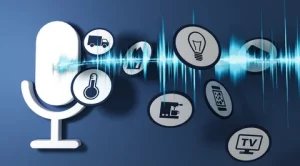Voice recognition, often referred to as speaker recognition, is a technology that enables machines or programs to receive and interpret spoken commands. It allows users to interact with devices through voice, simplifying tasks such as dictation, reminders, and control of smart devices. With the rise of artificial intelligence (AI) and intelligent assistants like Amazon’s Alexa and Apple’s Siri, voice recognition has gained significant prominence in recent years.
Understanding Voice Recognition Technology
Voice recognition technology allows computers to interpret human speech by converting analog audio into digital signals. The process involves several critical steps, including automatic speech recognition (ASR), pattern recognition, and the application of machine learning algorithms. This enables the technology to recognize not only what is said but also who is speaking.
How Voice Recognition Works

- Analog-to-Digital Conversion: Voice recognition software starts with converting analog audio into digital signals. This step is crucial because computers can only process digital information.
- Pattern Recognition: Once the audio is in digital form, the system uses pattern recognition to analyze the speech. It compares the sound waves to a stored database of words or syllables, checking for matches. This comparison is essential for translating spoken language into text.
- Neural Networks and Machine Learning: Modern voice recognition systems often utilize neural networks, particularly recurrent neural networks (RNNs), to improve accuracy. These models can take into account the context of previous words when interpreting new input, enhancing the system’s ability to understand natural speech.
- Hidden Markov Model (HMM): Another commonly used model is the hidden Markov model, which breaks down spoken words into phonemes, allowing for precise recognition of individual sounds.
Benefits of Voice Recognition
Voice recognition technology offers numerous advantages, making it increasingly popular among consumers and businesses alike:
- Hands-Free Operation: Users can interact with their devices without needing to touch them, allowing for multitasking. For example, a driver can make calls or send messages while keeping their hands on the wheel.
- Accessibility: Voice recognition aids individuals with disabilities, particularly those who have difficulty typing or using traditional input methods. This inclusivity has broadened access to technology for many users.
- Speed and Efficiency: Voice recognition can capture speech faster than typing, making tasks like taking notes or setting reminders quicker and more convenient. This efficiency is especially valuable in fast-paced environments, such as workplaces or classrooms.
- Improved User Experience: Virtual assistants like Siri and Alexa offer a more intuitive way to interact with technology, as users can issue commands in natural language.
- Data Collection for Machine Learning: As more users interact with voice recognition systems, the data collected can be utilized to enhance the technology’s accuracy and effectiveness through machine learning.
Examples of Voice Recognition Technology
Voice recognition technology is integrated into various applications and devices, revolutionizing how users interact with technology. Here are some notable examples:
- Virtual Assistants: Platforms like Siri, Alexa, and Google Assistant leverage voice recognition to perform tasks such as setting reminders, providing weather updates, and controlling smart home devices.
- Smart Home Devices: Users can control smart appliances, lighting, and thermostats using voice commands. For instance, a user can say, “Turn on the living room lights,” and the system will execute the command.
- Automated Phone Systems: Organizations utilize voice recognition in their customer service systems, allowing callers to navigate through options by speaking. For example, users can say, “Press 1 for sales,” without needing to use a keypad.
- Conferencing Tools: Live captioning services employ voice recognition to transcribe spoken words into text in real time, aiding participants in following discussions more effectively.
- Dictation Software: Tools like Dragon NaturallySpeaking allow users to dictate documents and emails, significantly speeding up the writing process.
Case Study Analysis
To better understand the impact of voice recognition technology, we can look at several case studies of its implementation in different industries. The following table summarizes key findings and outcomes from these implementations:
| Case Study | Industry | Technology Used | Results | Benefits |
|---|---|---|---|---|
| Amazon Alexa | Consumer Electronics | Voice Assistant | Increased sales of smart home devices by 40% | Hands-free control and seamless integration with home devices |
| Siri in Healthcare | Healthcare | Dictation and Scheduling | Reduced appointment scheduling time by 30% | Improved patient engagement and time management |
| Voice Recognition in Banking | Financial Services | Automated Phone Systems | Enhanced customer service satisfaction by 25% | Faster call handling and reduced wait times |
| Google Meet Live Captioning | Education | Live Captioning | Improved accessibility for hearing-impaired students | Enhanced learning experience and inclusivity |
| Nuance in Legal Sector | Legal | Dictation Software | Increased document preparation speed by 50% | Greater efficiency in legal documentation |
Challenges and Disadvantages

Despite its many benefits, voice recognition technology does face some challenges:
- Background Noise: Voice recognition systems can struggle with background noise, which may lead to inaccurate input or misinterpretation of commands.
- Accuracy Limitations: Although accuracy rates have improved significantly, voice recognition systems can still make errors, especially in noisy environments or when users have strong accents.
- Homophones: Words that sound alike but have different meanings (e.g., “hear” and “here”) can confuse voice recognition systems. This challenge often requires contextual information to resolve ambiguities, necessitating advanced processing capabilities.
- Data Privacy Concerns: The collection and storage of voice data raise privacy concerns. Users may worry about how their data is being used or whether it is being adequately protected.
- Resource Intensive: High-performance voice recognition systems require substantial computing resources, including RAM and processing speed, which can be a limitation for some devices.
Future of Voice Recognition Technology
The future of voice recognition technology looks promising, with ongoing advancements in AI, machine learning, and natural language processing. As these technologies continue to evolve, we can expect improvements in the accuracy, efficiency, and applicability of voice recognition systems across various sectors.
- Enhanced Personalization: Future voice recognition systems may become more personalized, learning user preferences and habits to provide more tailored responses and services.
- Multilingual Capabilities: As global communication becomes increasingly important, voice recognition systems will likely improve their multilingual capabilities, allowing users to communicate in different languages seamlessly.
- Integration with Augmented Reality (AR): Voice recognition could play a significant role in AR applications, enabling users to interact with virtual objects and environments using natural speech.
- Smarter Virtual Assistants: Future virtual assistants may become more intelligent and context-aware, allowing for more natural conversations and complex task management.
Conclusion
Voice recognition technology has transformed how users interact with devices, offering convenience, accessibility, and efficiency. With advancements in AI and machine learning, the capabilities of voice recognition systems will continue to expand, leading to new applications and improved user experiences. While challenges remain, the benefits of voice recognition far outweigh the drawbacks, making it a vital component of modern technology. As the landscape of voice recognition continues to evolve, users can expect an increasingly seamless integration of this technology into their daily lives.




